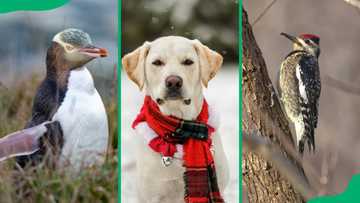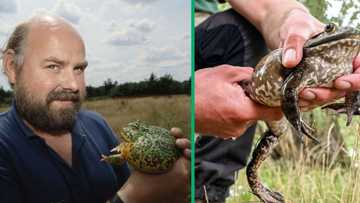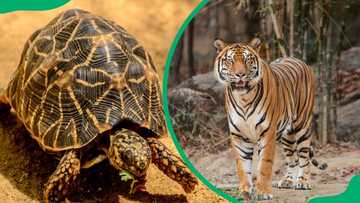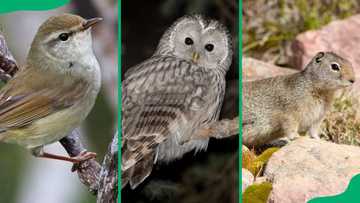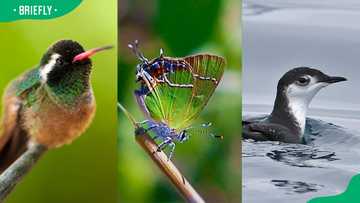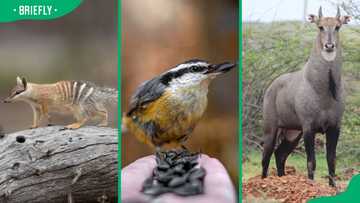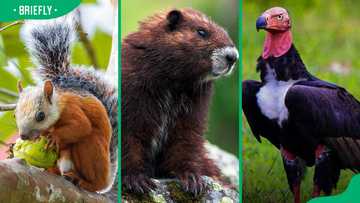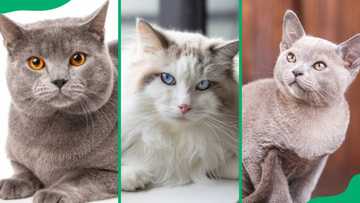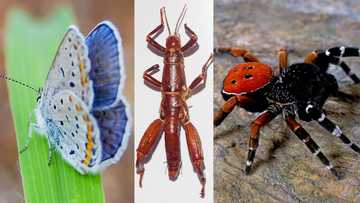Animals that start with E: a guide with pictures & species facts
Animals are an integral part of Earth’s ecosystem, playing essential roles in maintaining the balance of nature. Whether you are an educator aiming to incorporate animals into alphabet lessons or an animal lover, you might be eager to explore the fascinating world of the animal kingdom. This post explores animals whose names start with the letter E with intriguing facts and pictures.
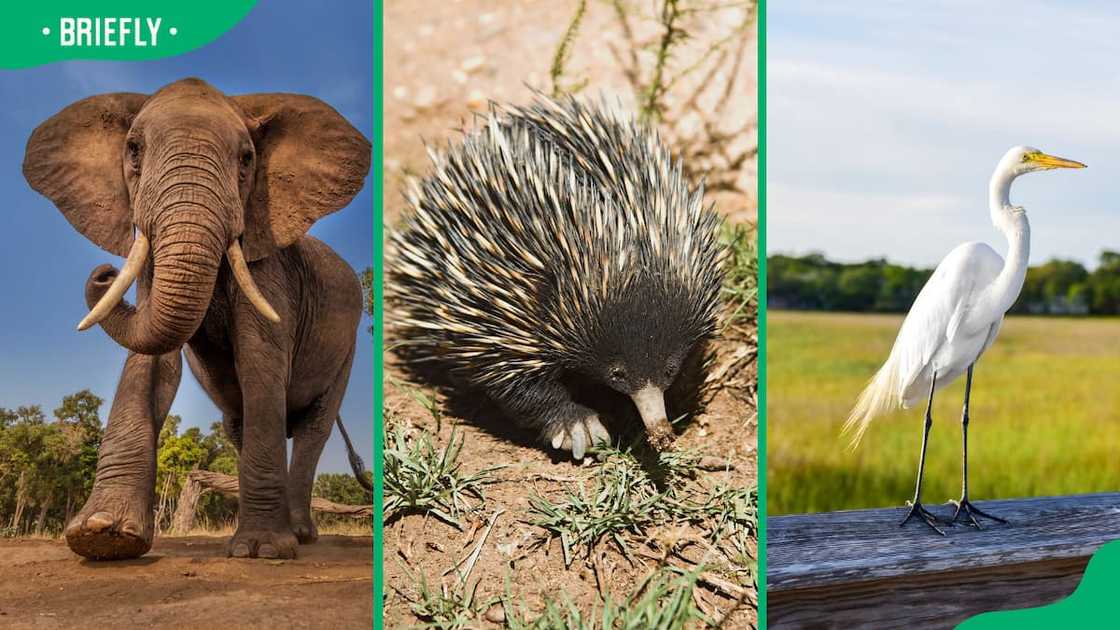
Source: Getty Images
TABLE OF CONTENTS
- List of animals that start with E
- 1. Eagle
- 2. Earthworm
- 3. Echidna
- 4. Electric ray
- 5. Eel
- 6. European Hedgehog
- 7. Egret
- 8. Eurasian lynx
- 9. Elephant
- 10. Elk
- 11. Emu
- 12. Ermine
- 13. Escolar
- 14. Elephant seal
- 15. Earwig
- 16. Eland
- 17. Electric eel
- 18. Elephant shrew
- 19. Eastern lowland gorilla
- 20. The Egyptian Mau
- What animal starts with the letter E?
- What large mammal starts with E?
- What is a horned animal that starts with E?
- Which animal is the letter E in India?
The animal kingdom is broad and is filled with numerous incredible creatures. Among these creatures are those animals that start with E, showcasing the uniqueness and wonder of nature.
Some common animals that start with the letter E are eagles, earthworms and elephants. The diversity showcased by these animals highlights the awe-inspiring richness that makes Earth a planet brimming with life.
List of animals that start with E
Exploring animals that start with the letter E is a gateway to a deeper understanding and appreciation of the diverse life forms that share our planet. It is an opportunity to learn about some of the most obscure species. Here is an enchanting exploration of the animal kingdom, explicitly targeting E animals.
1. Eagle
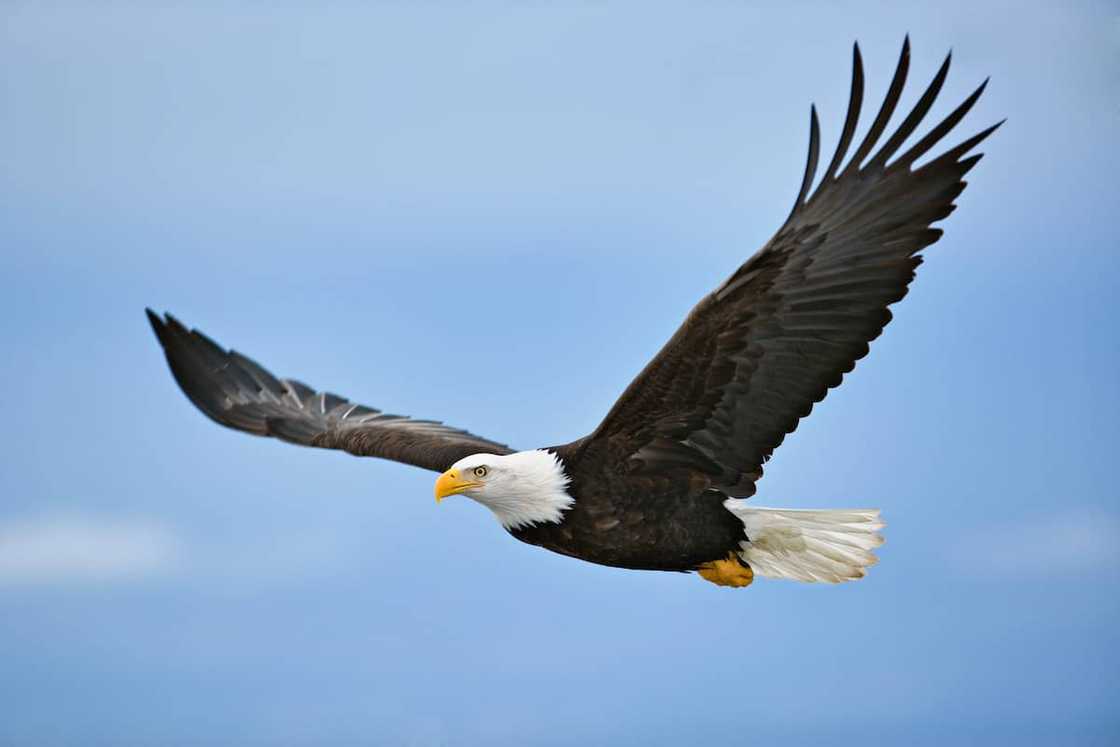
Source: Getty Images
- Kingdom: Animalia
- Phylum: Chordata
- Class: Aves
- Order: Falconiformes
- Family: Accipitridae
- Genus: Aquila
Eagles belong to several groups of genera, some closely related. True eagles comprise the genus Aquila. Like all birds of prey, eagles have large, powerful hooked beaks for tearing flesh from their prey, strong legs, and powerful talons. Although not the most agile flyer, its remarkable speed in the air certainly belies its enormous size relative to other birds.
2. Earthworm
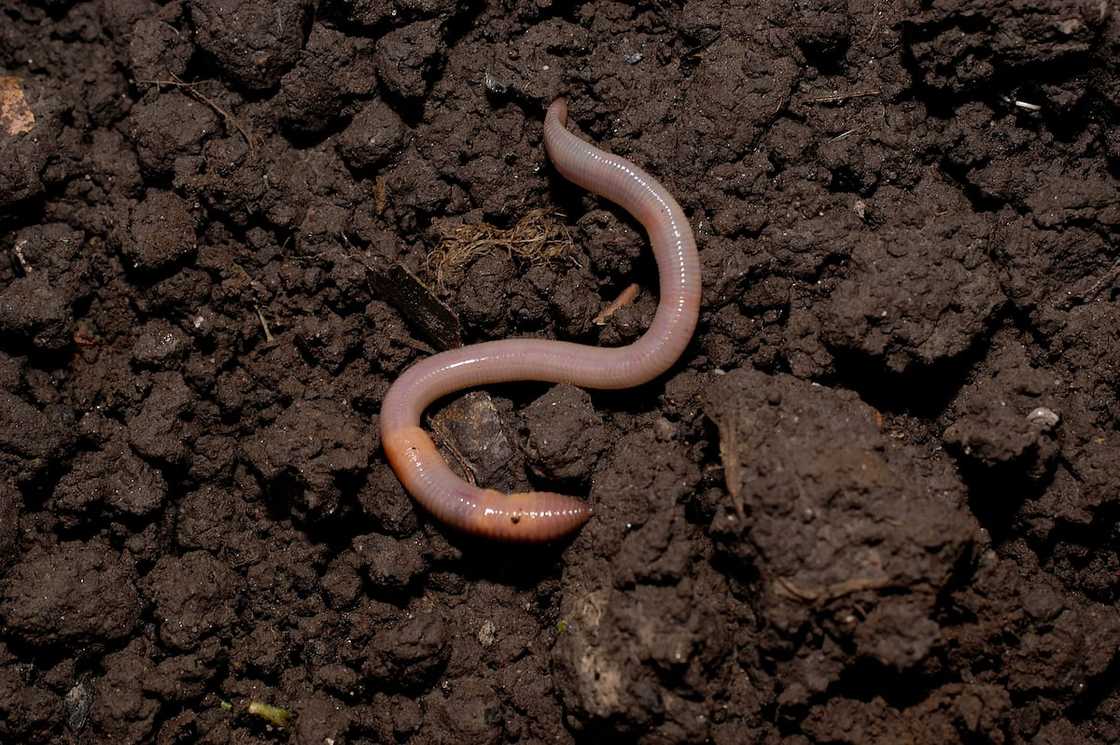
Source: Getty Images
- Kingdom: Animalia
- Phylum: Annelida
- Class: Clitellata
- Order: Opisthopora
- Family: Limbricidae
- Genus: Lumbricus Linnaeus
Earthworms are worms that live in moist, compost-rich soil. They belong to the phylum Annelida and eat multiple organic matter, including detritus, living protozoa, rotifers, nematodes, bacteria, fungi, and other microorganisms. An earthworm's digestive system runs the length of its body.
3. Echidna
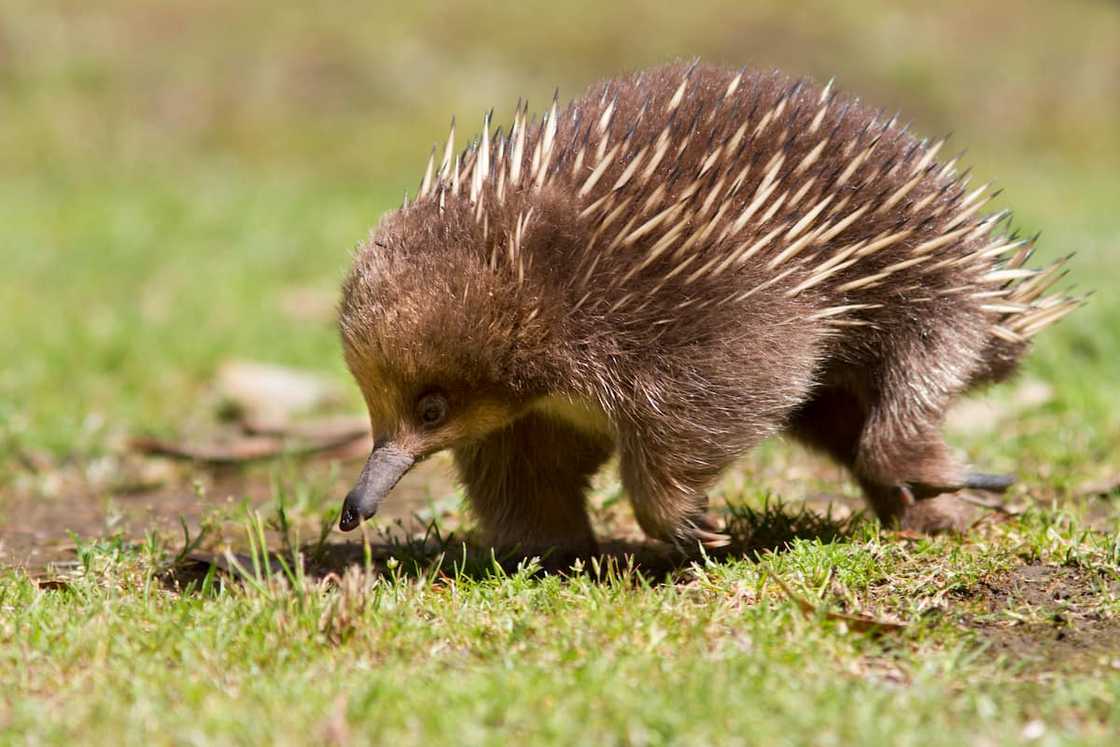
Source: Getty Images
- Kingdom: Animalia
- Phylum: Chordata
- Class: Mammalia
- Order: Monotremata
- Family: Tachyglossidae
- Genus: Tachyglossus
Echidnas, or spiny or spiky anteaters, are one of only two mammals that lay eggs. They are quill-covered monotremes from the Tachyglossidae family. They are natives of Australia and New Guinea.
4. Electric ray
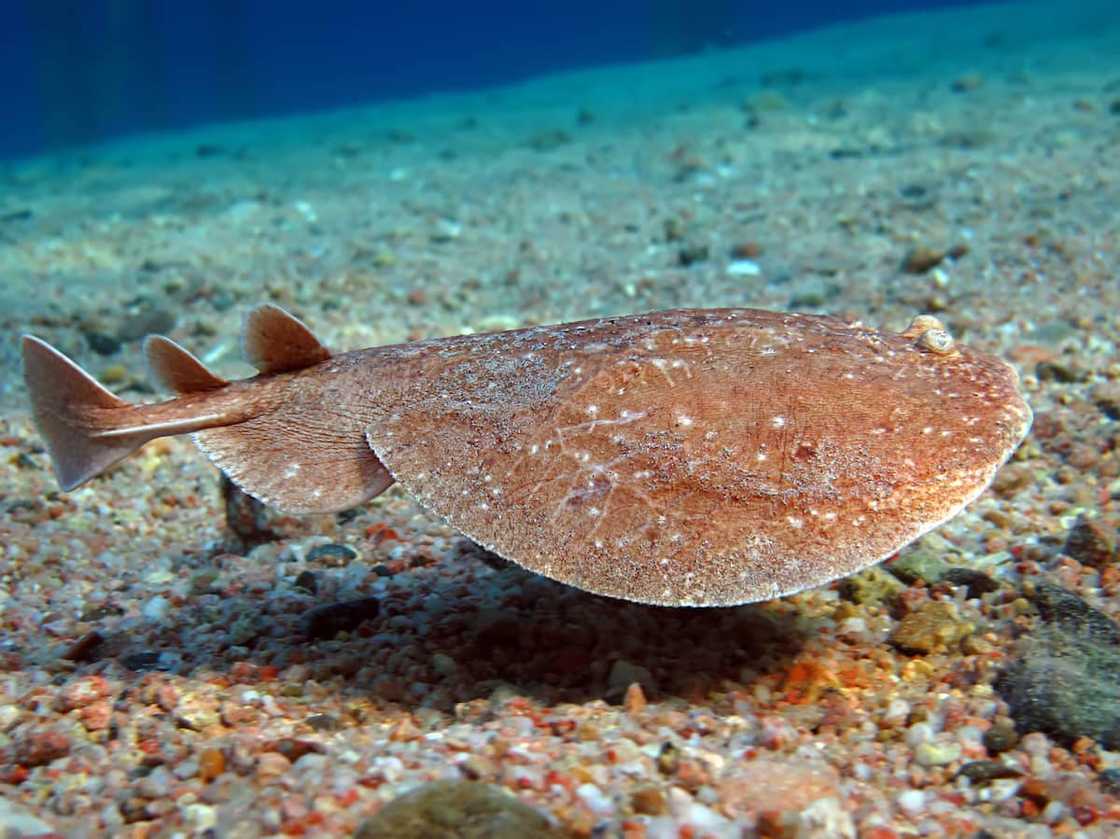
Source: Getty Images
- Kingdom: Animalia
- Phylum: Chordata
- Class: Chondrichthyes
- Order: Torpediniformes
- Family: Torpedinidae
- Genus: Torpedo
The electric rays are a group of flattened cartilaginous fish with enlarged pectoral fins belonging to Phylum Chordata. They are among the sea animals that start with E and are known for their ability to produce an electric shock used to stun prey and for defence. They are 69 species in four families and one of the most known members are those of the genus Torpedo.
5. Eel
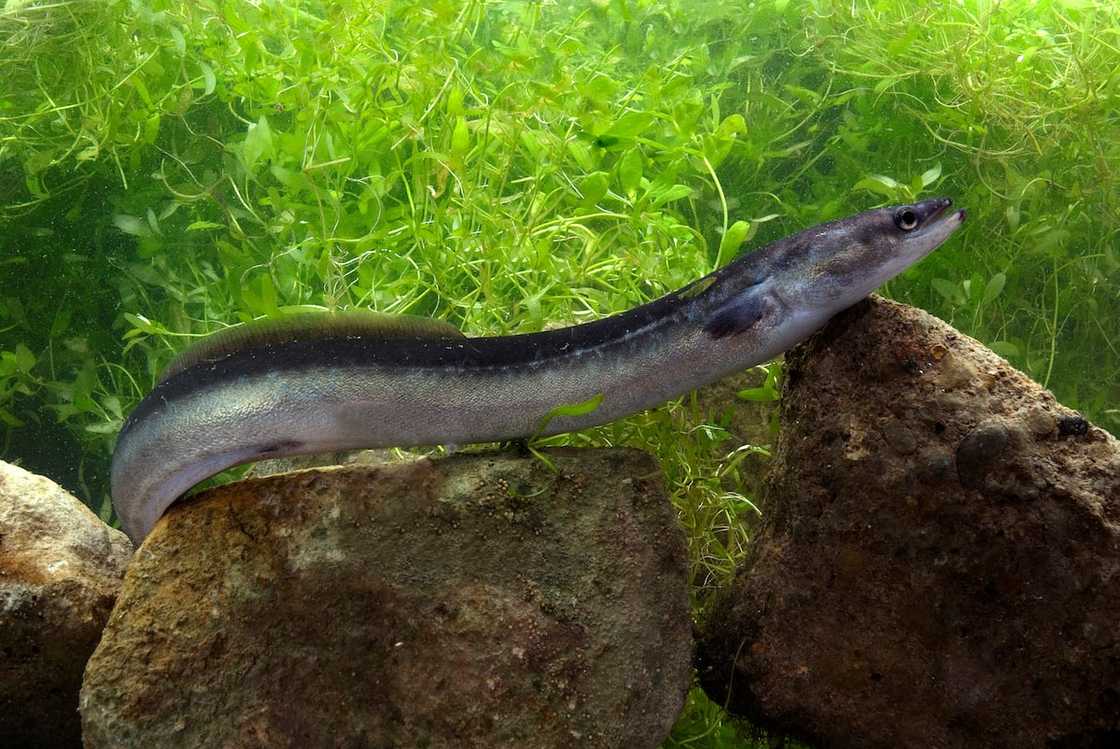
Source: Getty Images
- Kingdom: Animalia
- Phylum: Chordata
- Class: Actinopterygii
- Order: Anguilliformes
- Family: Anguillidae
- Genus: Anguilla
Eels are ray-finned fish under the order Anguilliformes. They are known for their long, snake-like body and lack of scales. They undergo considerable development from the early larval stage to the eventual adult stage and are generally predators. The most dangerous eel species is the conger.
6. European Hedgehog
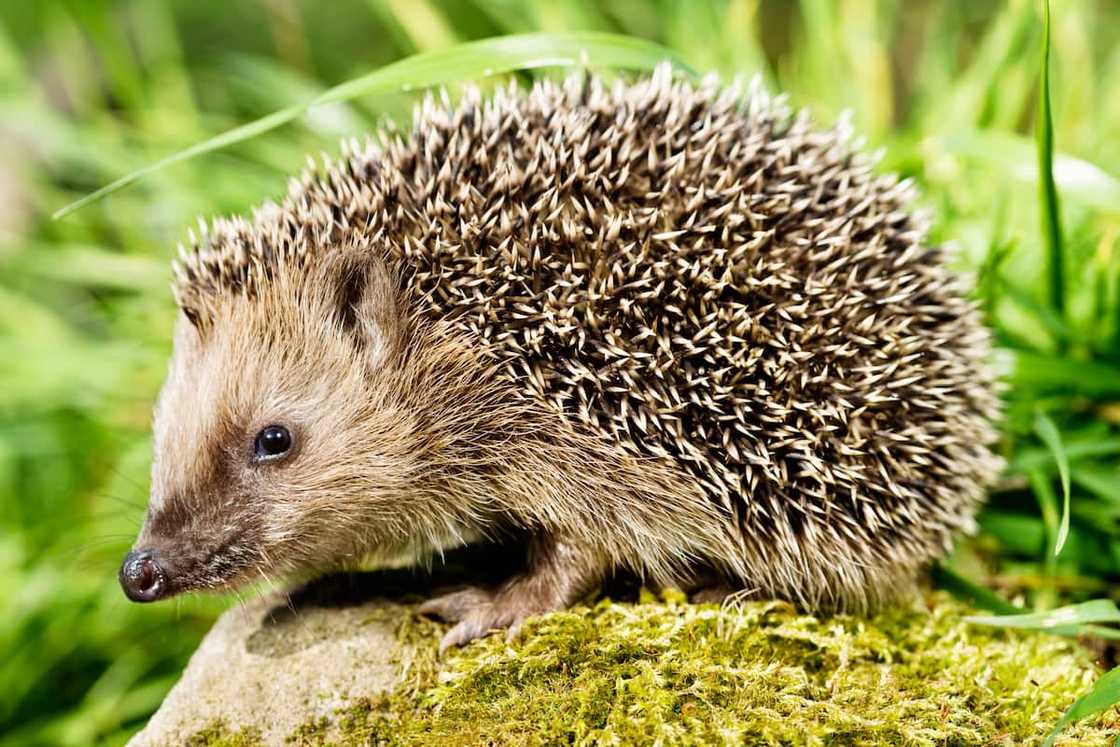
Source: Getty Images
- Kingdom: Animalia
- Phylum: Chordata
- Class: Mammalia
- Order: Eulipotyphla
- Family: Erinaceidae
- Genus: Erinaceus
The European hedgehog is a spiny mammal found in European gardens and forests. European hedgehogs are well-known for their endearing appearance and preference for eating garden pests. They have a unique immunity to snake venom, allowing them to eat snakes without harm.
7. Egret
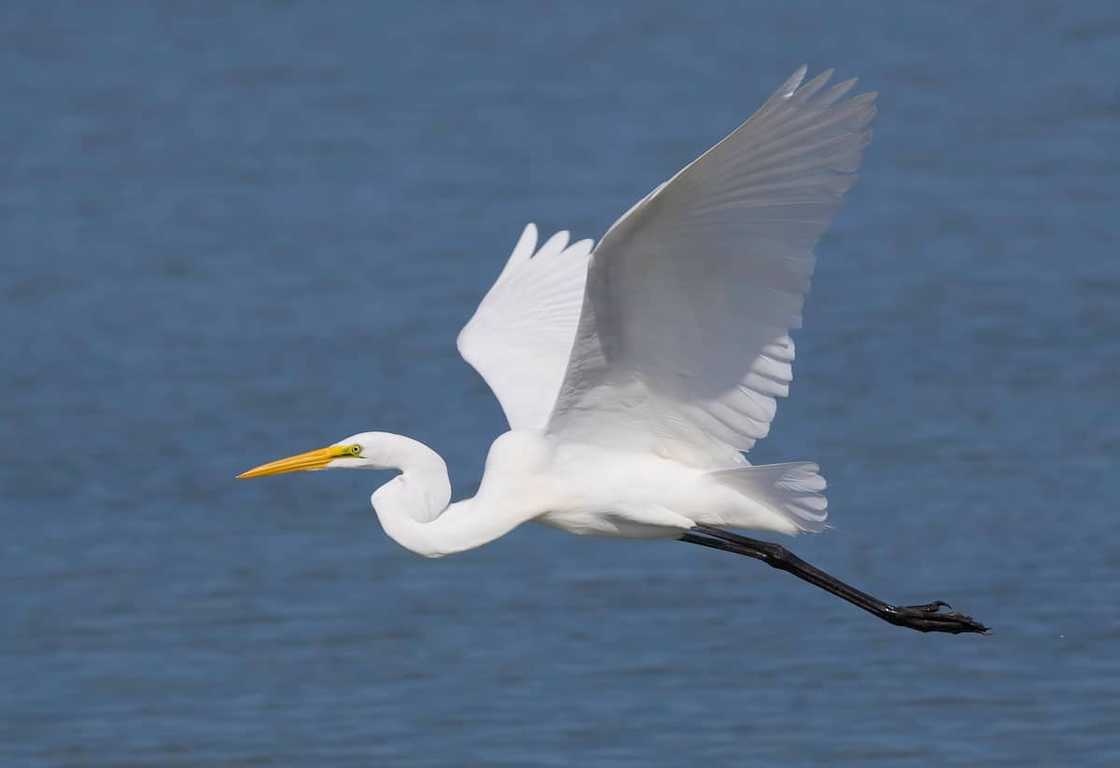
Source: Getty Images
- Kingdom: Animalia
- Phylum: Chordata
- Class: Aves
- Order: Pelecaniformes
- Family: Ardeidae
- Genus: Egretta, Ardea, Bubulcus, Mesophoyx
Egrets are long-legged, wading birds that have white or buff plumage. These elegant birds develop fine plumes, usually milky white, during breeding. Egrets are not biologically distinct from herons; they share the same build and characteristics. They are in freshwater and saltwater habitats.
8. Eurasian lynx
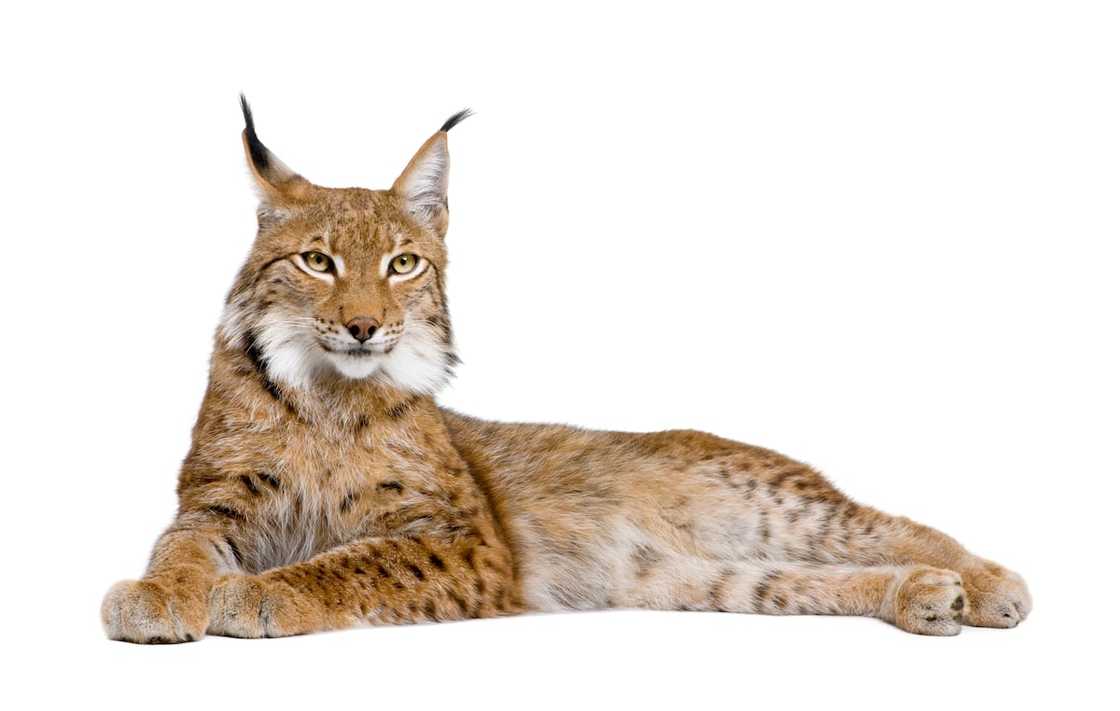
Source: Getty Images
- Kingdom: Animalia
- Phylum: Chordata
- Class: Mammalia
- Order: Carnivora
- Family: Felidae
- Genus: Lynxes
The Eurasian lynx is among the cute animals that start with E and one of the four extant species within the medium-sized wild cat genus Lynx. This beautiful animal has a wide distribution, ranging from Northern, Central, and Eastern Europe to Central Asia, Siberia, the Tibetan Plateau, and the Himalayas.
9. Elephant
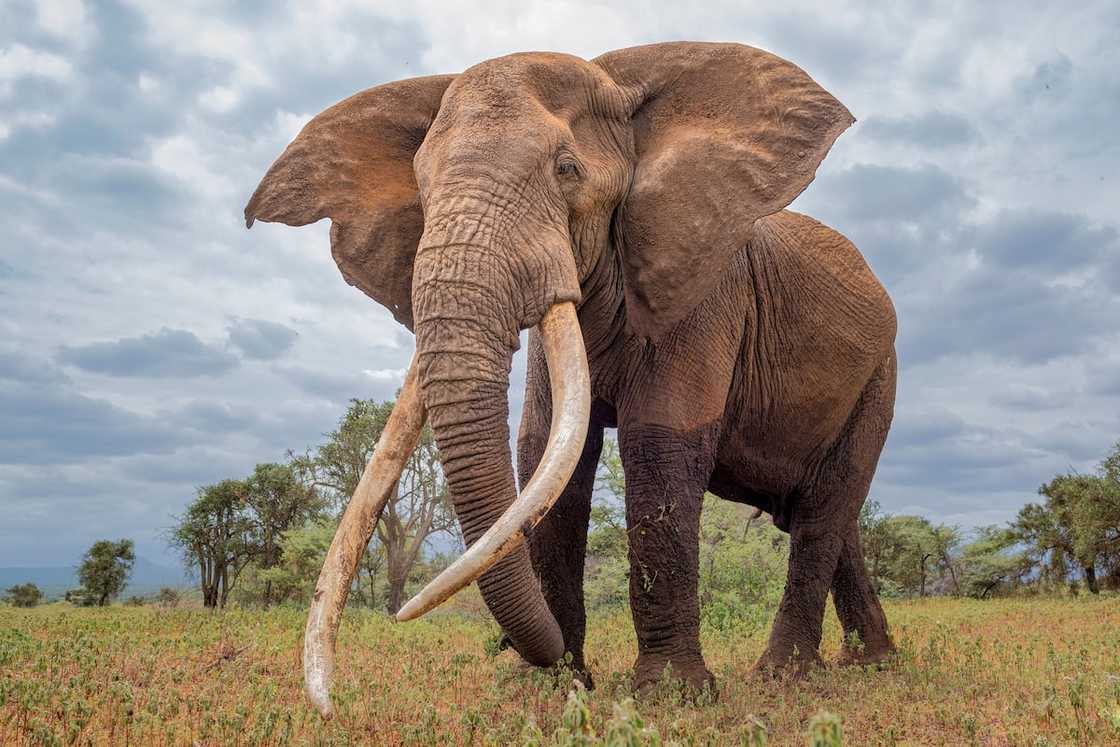
Source: Getty Images
- Kingdom: Animalia
- Phylum: Chordata
- Class: Mammalia
- Order: Proboscidea
- Family: Elephantidae
- Genus: Loxodonta
Elephants are the largest living land animals known for their long trunks, tusks, and large ears. Three living species are currently recognised: the African bush elephant, the African forest elephant and the Asian elephant.
Elephants are herbivores, meaning they primarily eat plants. They are brilliant and social animals, living in groups called herds. They have a unique ability to communicate through various sounds and body language. Elephants are found in multiple habitats across Africa and Asia.
10. Elk
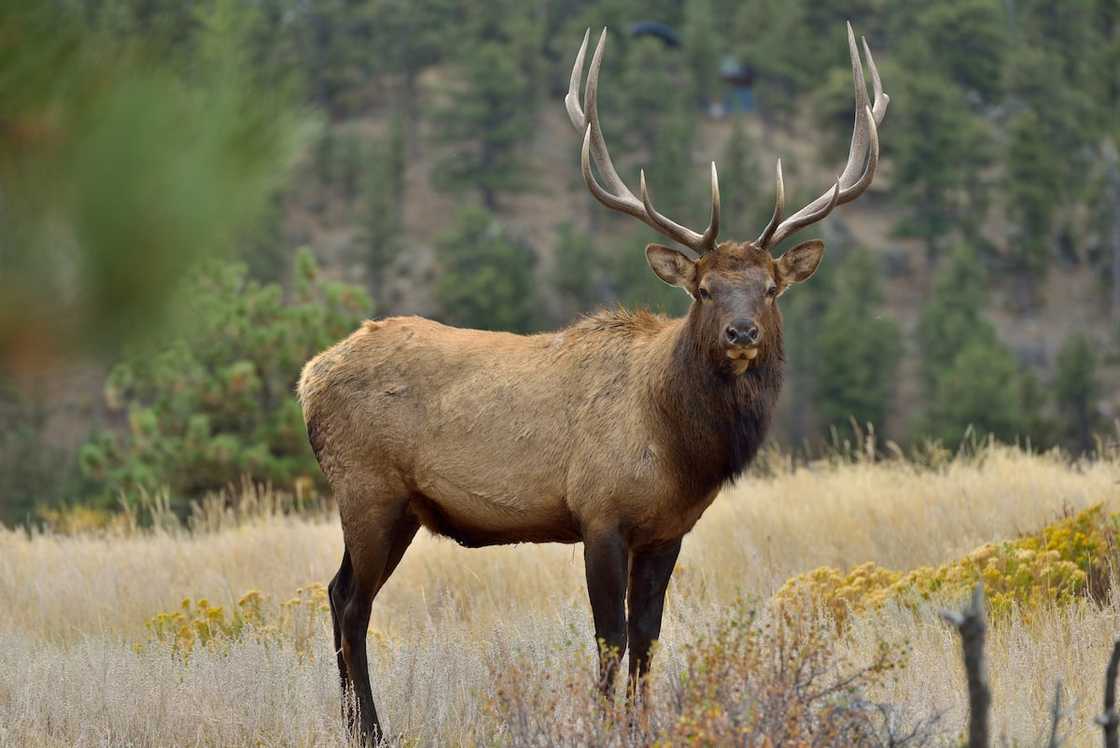
Source: Getty Images
- Kingdom: Animalia
- Phylum: Chordata
- Class: Mammalia
- Order: Artiodactyla
- Family: Cervidae
- Genus: Cervus
The elk is the second-largest wild herbivore, or cervid, after the moose. Elks live in forests, feeding on grasses, plants, and leaves. They are social animals living in herds and are recognised for their loud calls or bugles during the mating season. They are found in North America and eastern parts of Asia.
11. Emu
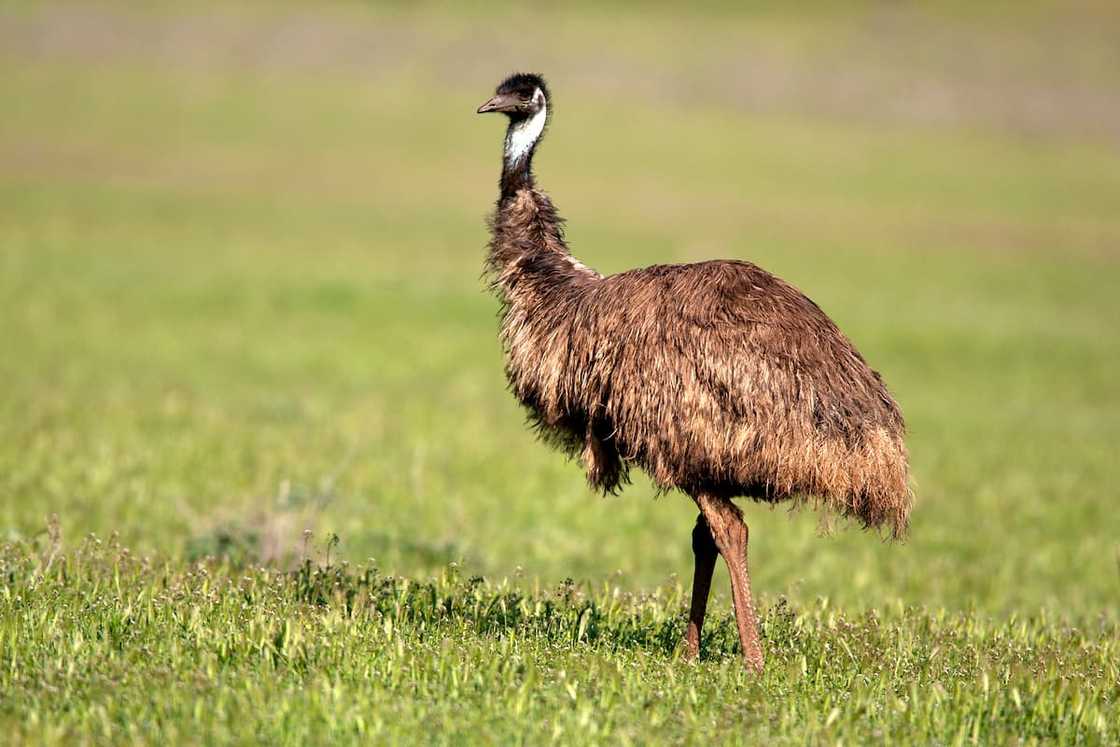
Source: Getty Images
- Kingdom: Animalia
- Phylum: Chordata
- Class: Aves
- Order: Casuariiformes
- Family: Casuariidae
- Genus: Dromaius
An emu is a flightless bird endemic to Australia, where it is the largest native bird. This bird is similar in appearance to an ostrich. Emus are omnivores eating seeds, fruits, insects, and small animals. They have soft, brown feathers with long necks and legs and can reach up to 1.9 m (6 ft 3 in) in height. They can run up to 30 miles per hour to escape predators.
12. Ermine
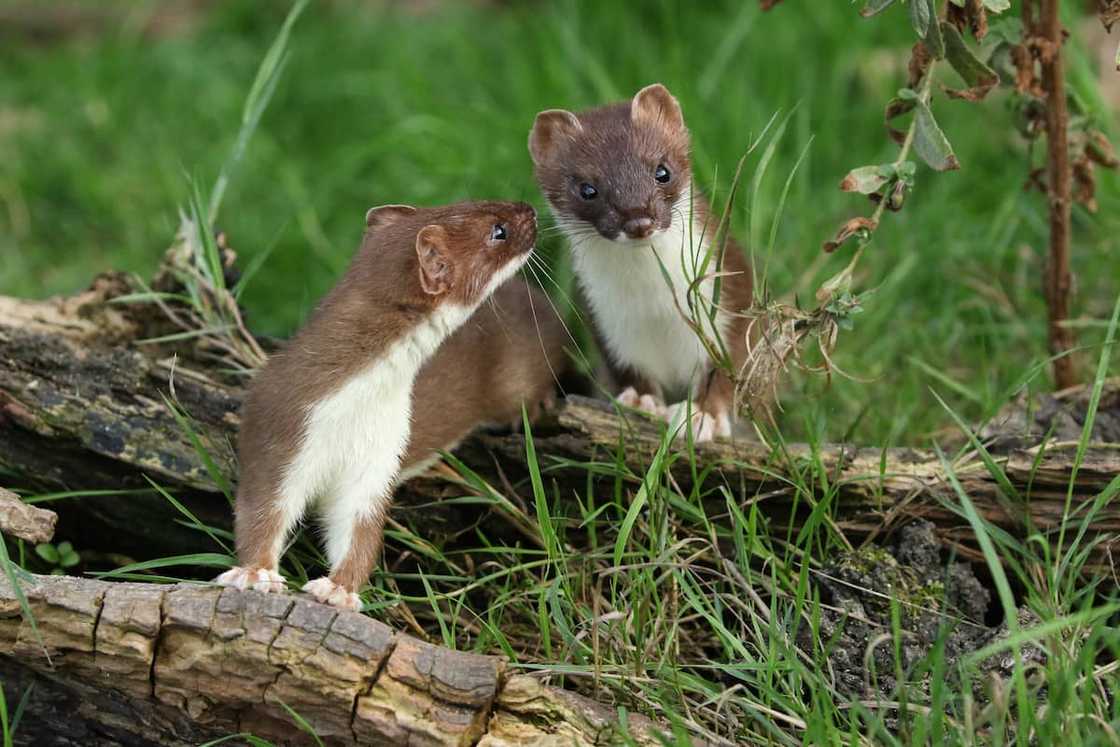
Source: Getty Images
- Kingdom: Animalia
- Phylum: Chordata
- Class: Mammalia
- Order: Carnivora
- Family: Mustelidae
- Genus: Mustela
The stoat, also known as the Eurasian ermine, Beringian ermine and ermine, is a mustelid native to Eurasia and the northern regions of North America. Ermine are carnivores and prey on small, warm-blooded vertebrates, particularly mammals the size of rabbits or smaller. They belong to the family Mustelidae, including ferrets, minks, and otters.
13. Escolar
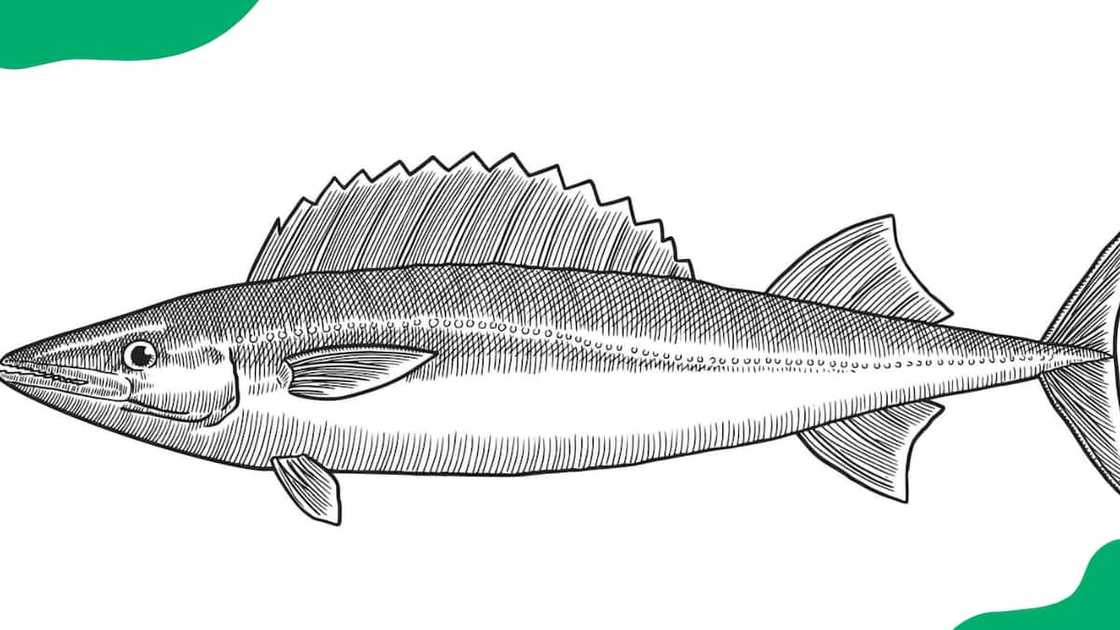
Source: UGC
- Kingdom: Animalia
- Phylum: Chordata
- Class: Actinopterygii
- Order: Scombriformes
- Family: Gempylidae
- Genus: Lepidocybium
Escolar is a dark brown oily fish native to tropical and temperate seas worldwide. Escolar is a member of the Gempylidae family. It is among the best-tasting fish, and its nutritional values are high. Escolar can grow to over 2 metres (7 ft) in length.
14. Elephant seal
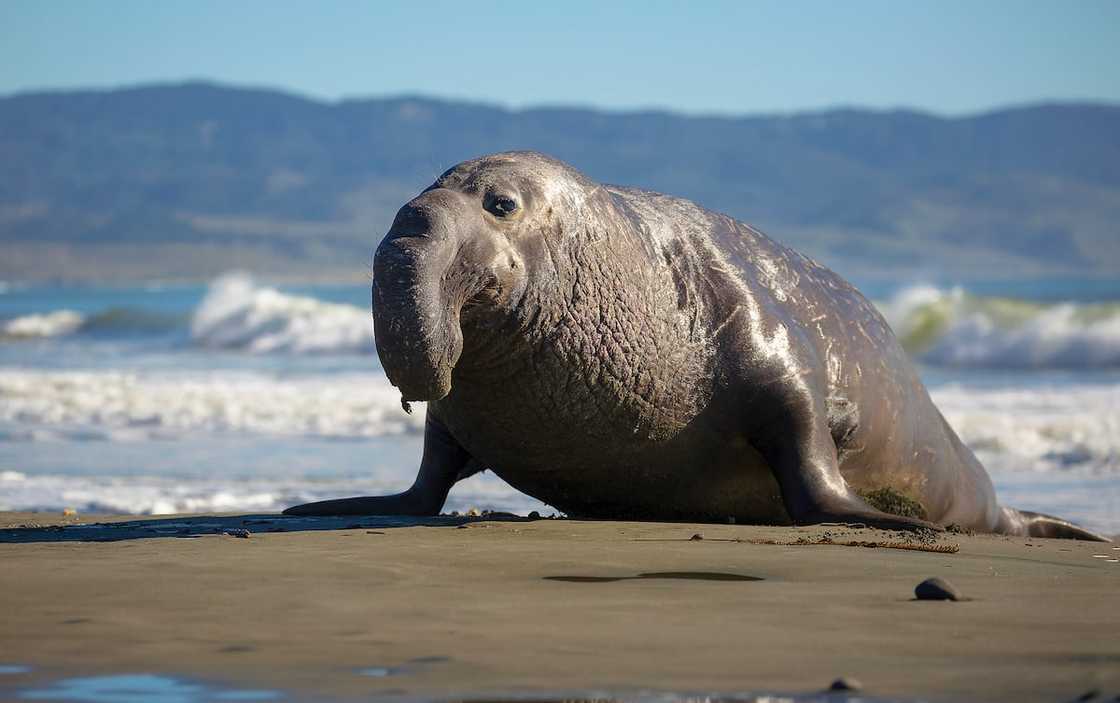
Source: Getty Images
- Kingdom: Animalia
- Phylum: Chordata
- Class: Mammalia
- Order: Carnivora
- Family: Phocidae
- Genus: Mirounga
Elephant or sea elephants are large, oceangoing earless seals in the Mirounga genus. Elephant seals eat fish, squid, and other cephalopods. They breed and moult on land. The southern elephant seal can hold its breath for over two hours, diving deeper than any other seal.
15. Earwig
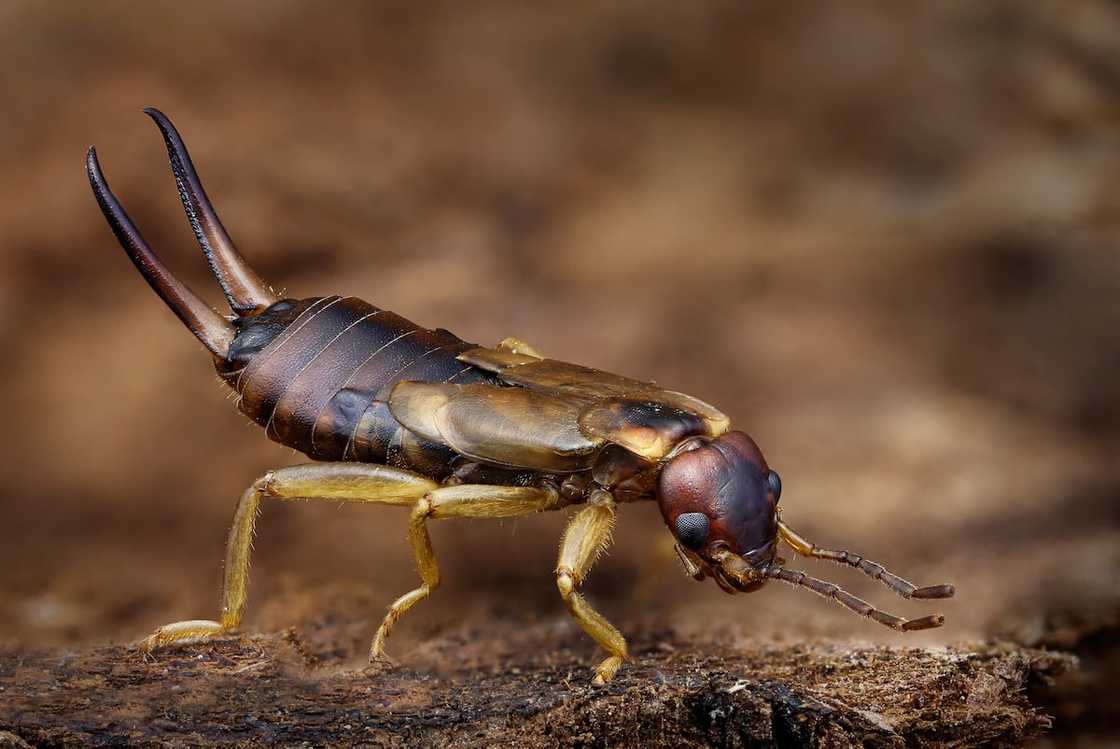
Source: Getty Images
- Kingdom: Animalia
- Phylum: Arthropoda
- Class: Insecta
- Order: Dermaptera
- Family: Forficulidae
- Genus: Forficula
An earwig is an insect with two antennae, six legs, three body parts, and a formidable set of pincers on the end of its abdomen. Earwigs belong to the insect order Dermaptera and are found worldwide with the greatest diversity in the tropics. This nocturnal scavenger insect spends its time sleeping during the day and hunting and eating at night.
16. Eland
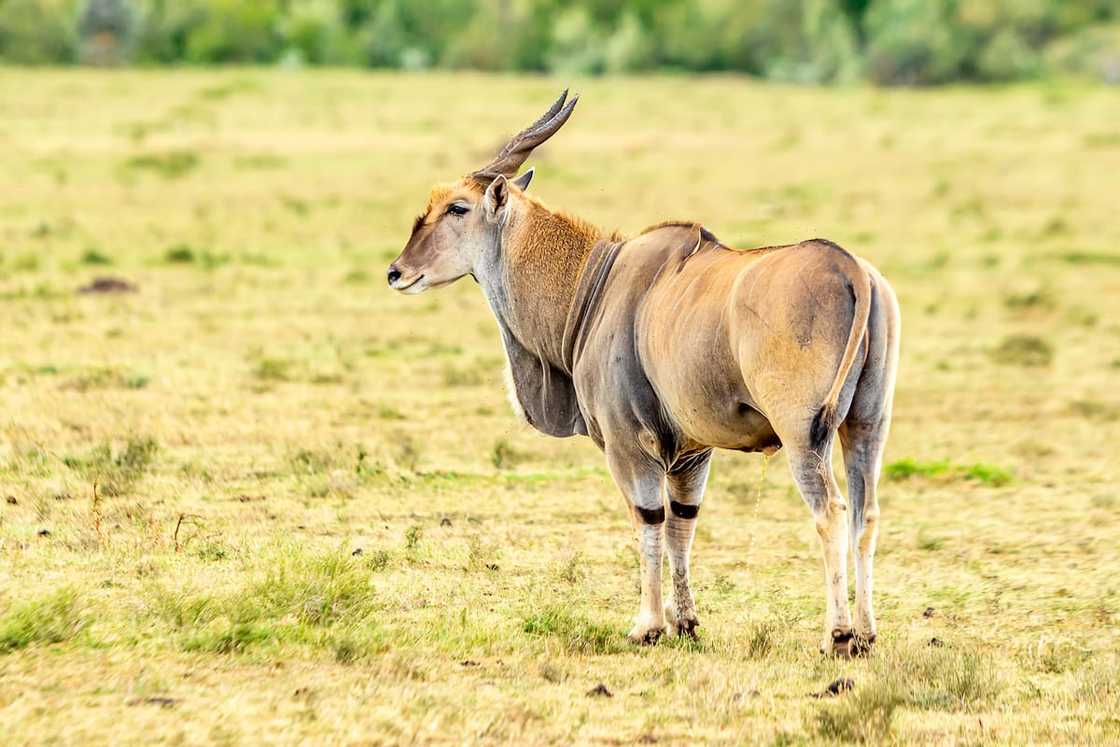
Source: Getty Images
- Kingdom: Animalia
- Phylum: Chordate
- Order: Artiodactyla
- Class: Mammalia
- Family: Bovidae
- Genus: Taurotragus
The common eland, also known as the southern eland or eland antelope, is a large-sized savannah and plains antelope found in East and Southern Africa. It is the largest of all antelopes and is known for its long, spiral-shaped horns, distinctive dewlap (a flap of skin) hanging from its neck, and a series of vertical white stripes on its sides. Elands are herbivores.
17. Electric eel
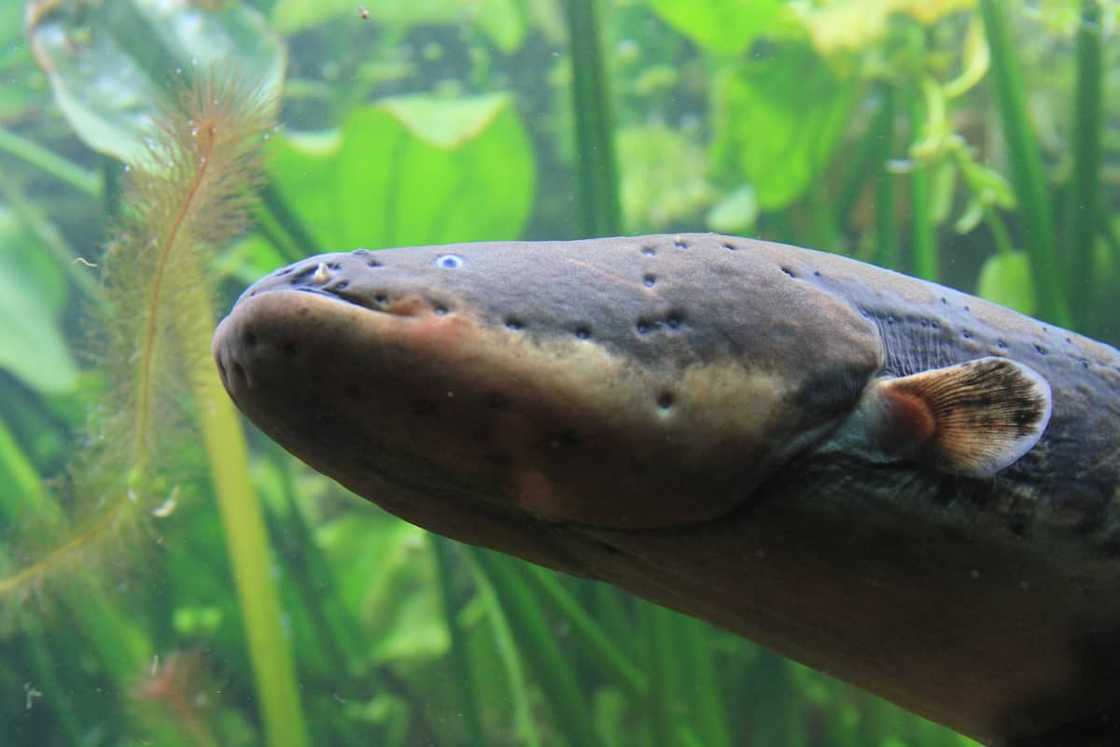
Source: Getty Images
- Kingdom: Animalia
- Phylum: Chordate
- Class: Actinopterygii
- Order: Gymnotiformes
- Family: Gymnotidae
- Genus: Electrophorus
The electric eels are a genus, Electrophorus, of neotropical freshwater fish from South America in the family Gymnotidae. Electric eels are nocturnal, live in muddy, dark waters, and have poor eyesight. They are known for their ability to stun their prey by generating electricity, delivering shocks at up to 860 volts.
18. Elephant shrew
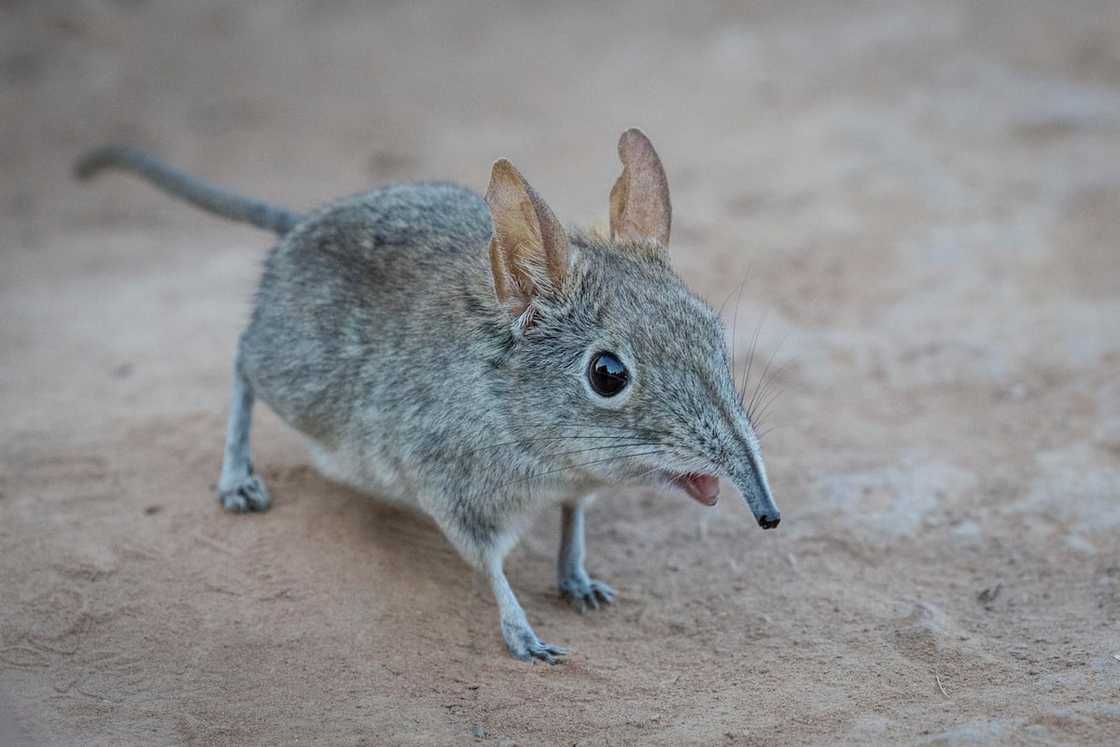
Source: Getty Images
- Kingdom: Animalia
- Phylum: Chordate
- Class: Mammalia
- Order: Macroscelidea
- Family: Macroscelididae
- Genus: Elephantulus
Elephant shrews, also called jumping shrews or sengis, are small insectivorous mammals native to Africa. They belong to the family Macroscelididae and in the order Macroscelidea. Elephant shrews are recognised for their long noses, which they use to probe for insects and other small invertebrates in leaf litter and soil. They can be found in various habitats like forests, savannas, and deserts.
19. Eastern lowland gorilla
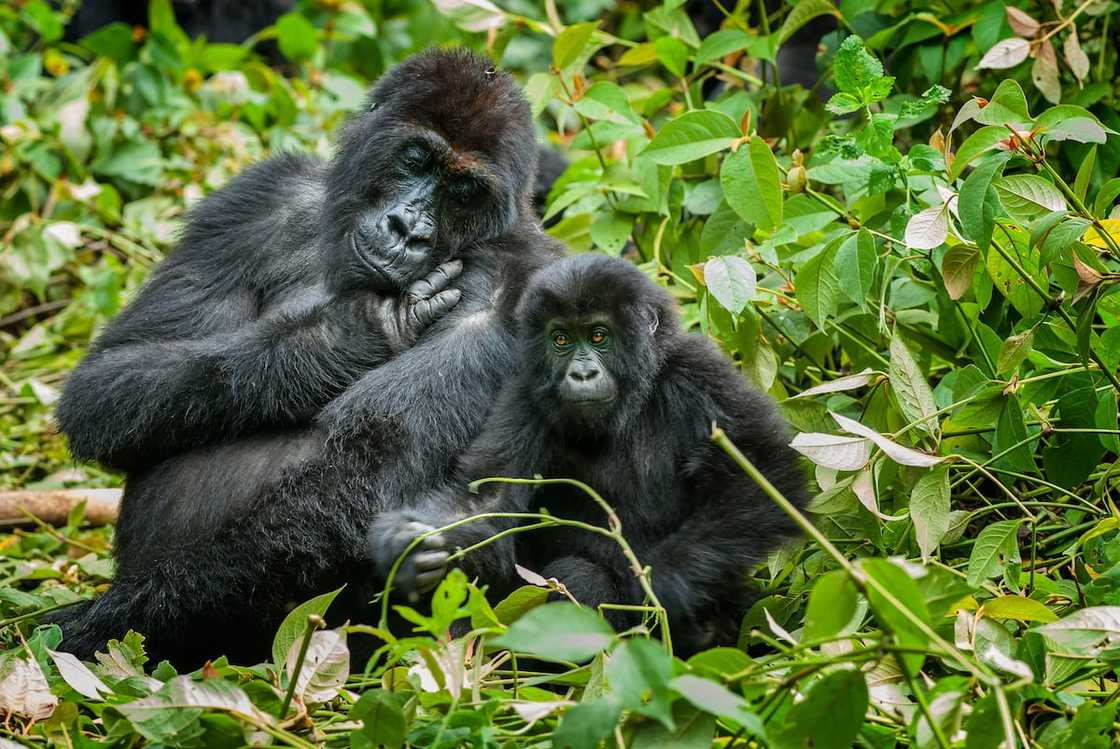
Source: Getty Images
- Kingdom: Animalia
- Phylum: Chordate
- Class: Mammalia
- Order: Primates
- Family: Hominidae
- Genus: Gorilla
The Eastern lowland gorilla, also known as Grauer's gorilla, is one of the four recognised subspecies of gorillas. It is among the critically endangered subspecies of eastern gorilla endemic to the mountainous forests of the eastern Democratic Republic of the Congo. These gorillas are primarily herbivores, feeding on various plants, fruits, leaves, and occasionally small insects.
20. The Egyptian Mau
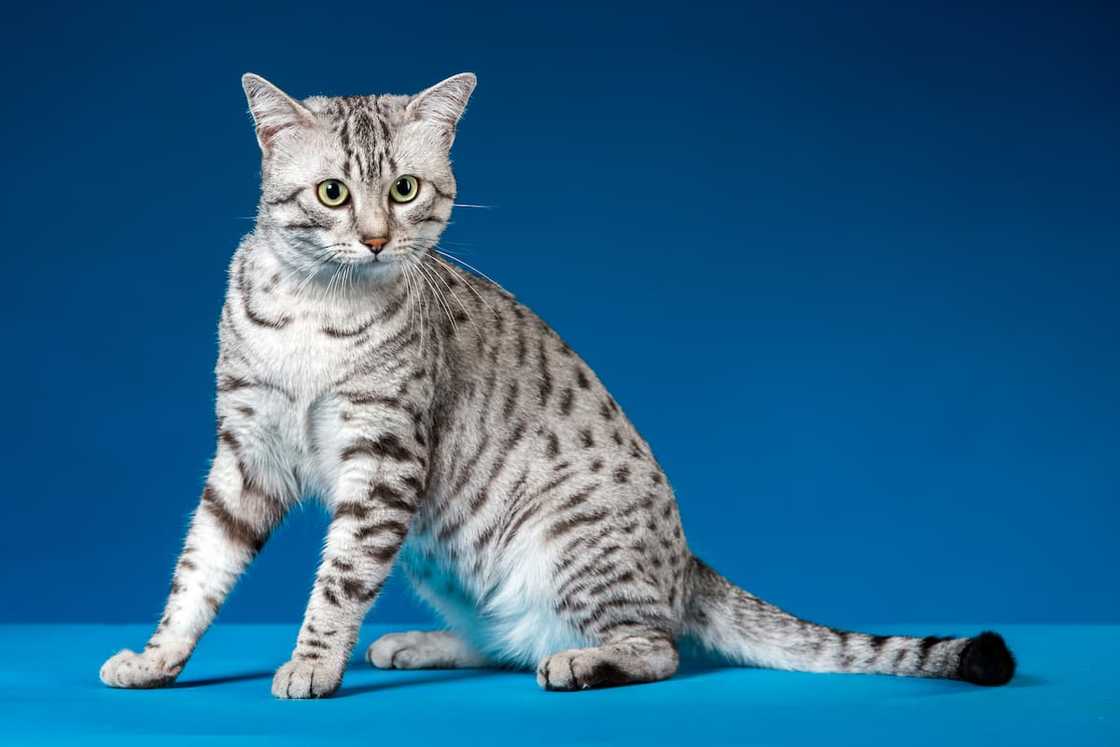
Source: Getty Images
- Kingdom: Animalia
- Phylum: Chordata
- Class: Mammalia
- Order: Carnivora
- Family: Felidae
- Genus: Felis
The Egyptian Mau is a small to medium-sized short-haired cat breed that originated in Egypt. They are regarded as one of the oldest domesticated cat breeds. The spots of the Mau occur on only the tips of the hairs of its coat. It is considered a rare breed.
What animal starts with the letter E?
Several animals start with E, and good examples are elephants, eagles, echidnas, and elk.
What large mammal starts with E?
One large mammal that starts with the letter E is the elephant.
What is a horned animal that starts with E?
Some horned animals that start with the letter E are eland, echidna, ewe (female sheep), Elk and European bison.
Which animal is the letter E in India?
In India, one animal whose name starts with the letter E is the elephant. Elephants are native to India and hold significant cultural and ecological importance in the country.
This comprehensive list of animals that begin with E provides a glimpse into nature's diverse and intriguing world. These animals contribute to the richness of Earth's ecosystems by highlighting the incredible variety of life on the planet. Recognising and preserving the importance of these animals is essential for maintaining the health and sustainability of the earth.
READ ALSO: The rarest insects in the world: Are they poisonous?
Briefly.co.za published an exciting post about the rarest insects in the world. Insects are the most varied living beings, making up the world's largest biomass. Around 900,000 known insect species account for 80% of all species globally.
Insects contribute to nutrient cycling by breaking down organic matter, recycling nutrients, and enhancing soil fertility. They serve as a primary food source for numerous animals, forming intricate food webs and supporting biodiversity. Find out about the rarest insects in the world and whether they are poisonous.
Source: Briefly News

